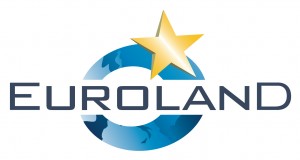As LEAP/E2020 often unlined it since January 2006, the global systemic crisis affects all fields and sectors of contemporary human activity. It is in this sense that this crisis differs from a classical crisis limited to this or that sector/region. In this edition of the GlobalEurope Anticipation Bulletin, our team of researchers has decided to publish their anticipations about a key-field of the world’s intellectual production, i.e. the value of international academic degrees. Our team therefore studied the trends currently affecting the value of the degrees granted by the world’s greatest academic centres, degrees which became over the last few decades the equivalent of “international degrees”, i.e. endowed with an intellectual, scientific and commercial worth acknowledged worldwide.
{{1. In a changing world, prestigious academic degrees can also become high-risk investments}}
For this study, the LEAP/E2020 researchers received the support of Franck Biancheri, LEAP/E2020’s director of research and one of the fathers of the [Erasmus->http://en.wikipedia.org/wiki/ERASMUS_programme] programme (a programme which changed drastically the European academic scene in twenty years) [[He also experienced intensively the US academic system: in 34 US states between 1999 and 2005. ]]. Instead of indulging themselves in an academic comparative exercise [[Many studies of that kind already exist which our team will refer to in the present issue of the GEAB. But as usual LEAP/E2020 wishes to provide anticipations leading to direct recommendations and operational advices for parents and students.]], our researchers endeavoured to bring real answers to parents or students willing to invest, sometimes at great cost, in a degree with an international scope in the hope that they will make a fruitful investment in the long run in terms of professional career.
Indeed investing in a degree is a ten to twenty year-bet on the future, supposing that the thousands or tens of thousands Euros or Dollars invested today will generate ten or a hundred times more in revenues tomorrow. What is at least expected is that the skills developed during the studies will match tomorrow’s needs and expectations worldwide. In any case, for a growing amount of parents and students in the US, in Europe, in Asia, in the Arab world… it is a big bet on the future.
Well, the ongoing global systemic crisis is changing fundamentally the absolute and respective value(s) of degrees on a world scale. Strangely enough, this change is hardly reflected in today’s dominant stances. However in one decade from now at most, some of today’s world top academic degrees will have lost a lot of their value while people graduated from others will be heavily demanded by employers.
Think of the degrees granted by those prestigious Soviet universities before 1989, whose degrees were not worth anything left in the 1990s. Well according to LEAP/E2020, a change of same scope is already underway that will take all its magnitude in the coming years. For you and your children, avoid to choose today for tomorrow’s world a degree from yesterday’s world!
{{2. The world of « prestigious degrees » suffers the same trends as the world altogether}}
On many aspects, trends within the world of « prestigious degrees » are similar to trends within the world altogether. After 1945, two super powers emerged, the United States and USSR, leading the elites from all over the world to organise their training processes around these two centres. Western universities developed a bilateral tropism nearly exclusively oriented towards US universities. Meanwhile, in the communist bloc, Soviet universities became the compulsory crossing point of satellite regimes’ future executives. This global academic “duopoly” imposed its rule over the academic planet until the 1980s.
From the second half of the 1980s onward, two simultaneous but indirectly related events put an end to this « duopoly »: the European Community’s 1987 launch of the Erasmus inter-academic programme and the 1989 Fall of the Berlin Wall [[We write « indirectly related » because it is obvious that the launch of the Erasmus programme in 1987 did not provoke the Fall of the Berlin Wall in 1989. However both events are closely linked to a common European momentum consisting in spontaneously and peacefully rejecting any external trusteeship over the “Old Continent”. Many academic, historical, political and sociological studies are still to be conducted to analyse this complex phenomenon.]]. Though the Erasmus programme does not compare historically speaking with the Fall of the Berlin Wall, both events in their way contributed to put an end to the two super-powers’ unrivalled domination on international academic degrees (i.e. acknowledged and appraised beyond national borders).
In the early 90s already, the entire communist academic system, centred on Moscow, was falling apart and the degrees so much appreciated only a few years before were not worth anything left on the market. Meanwhile, in just a few years time, Western Europe soon followed by the future (now new) Eastern and Central European member states, had refocused their academic exchanges on Europe, bilateral exchanges with the US thus shrinking away. In the mid-80s, nearly 90% of European students studying abroad went to the US; ten years later, in the mid 90s, this proportion had completely reversed with only 10% going to a US university and 90% going to another European country’s university.
<img161|right>
{{{Erasmus student mobility – 1987/88 to 2004/05}}}
On a global academic level however, due to the resounding collapse of the Soviet bloc (as opposed to the quasi-invisible progress of the Erasmus phenomenon), the dominant impression in the 90s (as in many other fields) was the apparent emergence of one single « hyper-power », the United-States, whose universities became a « Mecca » to any bright and/or ambitious student, whether Arabic, Russian, Latin American, Asian or European [[However this was already no longer true for Europeans. Not only because the amount of people concerned represents a very small minority but because it only concerns a restricted number of sectors such as economics, financial studies and information technologies.]]. US universities then tried to make the most of this quasi-monopolistic situation. The most prestigious even ended up largely depending on the revenues brought by foreign students. But instead of getting the advantage of this position of strength to evolve and adapt to a rapidly changing world, the greatest US universities settled for second best to enjoy the annuity, importing at a high price « rated » academics from all over the world. A few pioneer-institutions tried, with great difficulties, to develop new types of higher education structures, such as those who endeavoured to endow [NAFTA->http://en.wikipedia.org/wiki/North_American_Free_Trade_Agreement] with a higher education dimension. However similar efforts remain marginal by lack of interest on the part of most political leaders and academic staff [[For a good overview of academic projects/networks trying to develop in the North-American space, it may be useful to refer to list of subventions granted to this type of project by [FIPSE->http://www.fipse.aed.org/subject.cfm?program=3] (Fund for the Improvement of Post Secondary Education), a section of the US education department, particularly involved in this approach.
]], and due to NAFTA’s incapability to become something more than a mere trade agreement [[As highlighted in the OECD 2005-2006 report on higher education, the absence of workers’ freedom of movement within NAFTA explains for a large part the weakness of student mobility in North America. Source : « Education Policy Analysis, Focus on Higher Education », [OECD->http://books.google.fr/books?id=t3QduE9c6boC&dq=international+student+mobility+2006&pg=PA74&ots=WGwsE3rEHb&sig=ogNkjGW5tZCKbaS2MN-IyWmAx5U&prev=http://www.google.fr/search?q=international+student+mobility+2006&ie=utf-8&oe=utf-8&aq=t&rls=org.mozilla:fr:official&client=firefox-a&sa=X&oi=print&ct=result&cd=1#PPP1,M1] , 2005-2006 ]].
{{3. The US academic leadership lived its last years in the 90s: flows of foreign student coming to the US have been collapsing for 5 years already while they have progressed on a global level}}
Simultaneously, this dominant « foreign » orientation of large US universities, whose academic staff and students were less and less American, corresponded to a significant deterioration of the US educational system altogether [[A lot has been written on this subject. Here is for instance a very eloquent article published 19/01/2007 in [Buffalo Business First->http://buffalo.bizjournals.com/buffalo/stories/2007/01/22/newscolumn2.html] connecting the dots between socio-economic performances and educational crisis in the US. ]]. Our team has estimated that this negative trend began some time around 1970-1975 and then aggravated under the influence of four converging factors: under-investment in primary and secondary education, downgrading due to test processes solely based on Multiple-Choice Questions (MCQ) [[G.W. Bush’s « No Child Left Behind » programme has increased even more the proportion of primary and secondary pupils (the totality of younger generations now) whose entire schooling is based on Multiple-Choice Questions. Apart from the fact that this system leads the educators to lower the difficulty of the tests in order to improve their results, it also founds instruction on a capacity to tick boxes rather than to formulate questions and elaborate answers. The impact of this evolution on the US higher education system in the past two decades is devastating. Source: [New York Times->http://www.nytimes.com/2006/03/22/education/22education.html?_r=2&oref=slogin&oref=slogin] , 22/03/2006 ]], lack of responsible political authority and incapability to develop processes of comparison with foreign educational systems.
It is in this very negative background that took place the 9/11 (2001) and Iraq invasion (2002) events which provoked the questioning of the US monopoly on the market of international degrees. On the one hand, measures restricting the access to the US territory in the name of the fight against terrorism, created a legal barrier to the entry of a large number candidate students in US universities [[There is a multitude of articles and reports on this theme. Here is for instance a very interesting article published in March 2007 in « [Today Online->http://www.today.ucla.edu/campus/international_students-scholars/] », UCLA’s faculty and staff journal. ]]. On the other hand, the political, cultural and moral consequences of the invasion of Iraq reversed the trend among young international elites in terms of US attractiveness. The two phenomena feed one another and affect the motivation of foreign academics themselves to come and teach in the US. In parallel, the growing difficulties of the US economy, Katrina and New-Orleans, the enduring fall of the US dollar and G. W./ Bush’s budget priorities in favour of defence [[At the expense of research and science in particular. ]] put a final end to the myth of the “rich American universities” [[The proliferation of highly-covered incidents of fire arm slaughters on US college campuses has certainly not contributed to improve the image. ]].
The development of a global European academic system centred on the strong inter-academic networks born from Erasmus resulted in a proliferation of partnerships between EU establishments and universities from other continents (in the UNESCO’s 2004 top-ten academic destinations, there were 5 EU countries : UK, France, Germany, Spain and Belgium [[Source: « [The human face of global mobility : international highly skilled migration in Europe, North America and the Asia Pacific->http://atlas.iienetwork.org/?p=48027] », 2006. ]]). Meanwhile Asia is becoming a prominent academic destination due to the growing importance of this continent on a global scale. In 2006, EU member states welcomed twice more foreign students than the US (over 1,200,000 versus 560,000 [[Source: [Atlas of Student Mobility->http://atlas.iienetwork.org/?p=48027] , Institute of International Education. ]]), an evolution parallel with the growing loss of educational market shares suffered by US universities [[Source: [MSNBC->http://www.msnbc.msn.com/id/14034413] , 08/2006 ]].
<img158|right>
{{{Number of student visas for the US between 1998 and 2006 (decrease: light green to dark green / increase: light blue to dark blue) – Sources: Educationsector.org / US Department of State}}}
All these trends translate into statistics showing a steady decrease in the amount of foreigners going to the US to study. All the continents are affected by this tendency, even Latin America geographically so close to the US [[The case of Latin America is interesting to analyze ; indeed it is a region of the world that increases steadily the number of its migrants going to the US, however in the past few years the number of Latin American students going to the US is declining. This example reveals a process of intellectual and cultural « pauperization » of migration flows towards the US that should worry seriously Washington authorities.
]]. For a long time already Europe has stopped sending large contingents to US universities; meanwhile China and India are now reorienting their flows towards Europe [[Source: « Battling for market share 2 : the Middle powers and in ternational student mobility », [GlobalHigherEd->http://globalhighered.wordpress.com/2007/10/02/battling-for-market-share-2-the-middle-powers/] , 02/10/2007 ]] and Australia, when they do not simply develop their own large universities.
Simultaneously, Asia is becoming a major destination of international student mobility: the number of foreign students welcomed to China between 1999 and 2005 rose by 213 percent, while it rose by 42 percent for Australia and by 108 percent for Japan. In the meantime, the increase was 17 percent in the US, 29 percent in the UK, 46 percent in Germany and 81 percent in France [[Source: « The future of international students in the United States », [American Council on Education->http://www.acenet.edu/AM/Template.cfm?Section=InfoCenter&CONTENTID=18573&TEMPLATE=/CM/ContentDisplay.cfm] , 10/2006 ]].
These statistical tendencies convey an important mid-term consequence in terms of the professional « value » of a degrees, i.e. « alumni networks » ; indeed they show that on a global scale, tomorrow’s main « alumni networks » are being built outside the US (while it was the contrary in the past few decades). American students themselves tend to cross the Atlantic in large numbers in the opposite direction (compared to the years 1950-2000) [[Source: « More US students go broad for their MBAs », [USAToday->http://www.usatoday.com/money/perfi/college/2007-06-06-euro-mbas-usat_N.htm] , 06/06/2007
]].
{{4. The global systemic crisis involves a profound modification in future international elites’ training requirements}}
These trends will keep on strengthening because the weakening of the US academic fabric is structural. It relates to the US loss in attractiveness in general and to the country’s impoverishment, but it also relates to structural trends rooted in the emergence of a world different from the one created after 1945 whose global elites were trained by US universities all along the last six decades. According to LEAP/E2020, the structure and mechanisms at play in the world emerging from the global systemic crisis require elites capable of adapting to a diversity of cultures, civilisations and people. Companies, public institutions, NGOs, universities themselves, must now seek skills that can only be gained through a live-confrontation to differences, i.e. through the practical experience of the reality of others. These organisations hunt human resources capable of inventing, managing and developing human and technical networks. Those who own these skills will make a career and make the best use of their degrees.
This « political correctness » which invaded the US academic world, fear of confrontation even verbal one resulting from it, fictitious diversity of US campuses and behavioural uniformity, increased specialisation and weakness of secondary education, lack of knowledge and thus of understanding of the outer world (an indispensable knowledge worldwide in times of globalisation), obsession with short term financial profitability, these are some of the factors which instead of preparing a student to his/her future responsibilities, prevent him/her to adapt to these new requirements and confine him/her to a virtual world [[US research is affected; indeed despite some substantial budget increases, since 1990 it can no longer maintain its share of global innovation compared to European and Asian competitors. Source: [National Science Foundation->http://www.nsf.gov/news/news_summ.jsp?cntn_id=109732] , 19/07/2007 ]].
Command of geographically and culturally diversified networks, capacity to speak 3 to 4 different languages, preparation to interdisciplinarity, capability to question the authority, ability to manage conflicts, aptitude to anticipate collective trends,… according to LEAP/E2020, these are the decisive skills of the elites in the next decades. As regards scientific education, excellence will remain linked to technological performances [[And therefore to countries/economies owning the appropriate technological and industrial bases, i.e. for today and in the next twenty years at least, in Europe and Asia. America’s dis-industrialisation is no rhetorical image for the use of US trade-unions solely.]] and to the cultural excellence of a society altogether [[According to our team, it is an essential precision contradicting some academic centre’s claim to incarnate excellence in an ocean of mediocrity. Elites cannot be raised on informal hotbeds. For this reason, today’s leading US universities have been experiencing in the past few decades an erosion of their foundations due to the constant degradation of their national educational and cultural environment. The Berkeley, Harvard, Stanford,… of today are the pale copy of what they used to be twenty or thirty years ago. And in ten years times, the trend will be even stronger for all the reasons previously developed.]].
{{5. Eurasia (including Russia) at the heart of the world’s academic excellence in the coming two decades}}
According to our anticipations, today’s heavy trends (at least for another twenty years) put Europe and Asia at the centre of all upcoming scientific, technological and cultural tendencies. In the past twenty years, Europe gradually emerged as a « master » of trans-national networking and a champion of intercultural relations. This situation is clear throughout many academic fields, even in what used to be the US universities’ exclusive preserve, i.e. the famous MBAs.
According to LEAP/E2020, it is on these two continents that tomorrow’s academic clusters of excellence are emerging, those whose degrees will ensure for their owners the best professional profit in the next two decades. However, a radical change has occurred as opposed to the last decades (and a return somehow to the birth of universities in medieval Europe): excellence can no longer belong to one specific institution but only to a network of academic institutions. The question each parent or student must ask him/herself in the coming years is not « Is this university reputable? », it s rather « With which reputable institutions does this university collaborate? », « What sort of common curricula has this university developed with institutions from other countries? ». In the coming decades, international academic excellence will follow such roads.
{{6. Avoid falling victim of an academic degree « subprime crisis » in ten years time}}
Despite all these indicators, the dominant stance continues to consider that American universities are a world’s « must ». Though completely wrong, it is easy to understand why:
. those who invested in US degrees in the past thirty years (who also produce these analyses) spare no effort to safeguard their own « value »
. most Asian and European academics from today’s dominant generation (in their forties and more) continue to consider their career as it was considered when they were students, i.e. with the US as a ‘career lift’. They too promote their own cause [[In Europe however, it is now clear that academics coming from the Erasmus generations (under 40) no longer have this image and consider the US stop as one of many in an international academic tour. Two million of new European elites trained in the last twenty years are about to start making the most of one of the secrets of a degree’s value, i.e. networks of « alumni ». Asia is rapidly joining the list of required stops.]] and act just like the « rating agencies/large banks » complex act in today’s US subprime crisis: wearing both hats, they play the role of « independent » experts, advisers and selling agent of the service concerned. If you liked the “subprime”, you will love the degree crisis …
{{7. Think twenty years ahead when investing in a « prestigious degree »}}
In conclusion, parents and students, if you are about to invest in some costly higher education degree with an international scope, be aware that it will cost you less and profit you more professionally in Europe than in the US. In Asia, new excellence clusters are proliferating, even though their interconnections are still limited and therefore their « network » added-value must still progress; however this limitation is compensated by the growing economic and geopolitical importance of the region. It is risky to invest in a US degree today as its value could diminish even further than it already has. Indeed, it is very unlikely, according to LEAP/E2020, that US academic institutions manage to engage the reforms required in order to maintain their quality, as the political, economic, financial and human (teachers and students) conditions will keep on deteriorating [[Thus the reconstruction of a mass of US teachers fit for the new educational requirements after so many years of dereliction in this profession and of systematic resort to the « import » of foreign professors for the prestigious universities, is a great challenge. The EU for instance made the decision to develop the capability of understanding the outer world and different cultures by stimulating trans-European teacher mobility.]]. Trans-American academic network pioneers are too few and too weak to influence the sector altogether in the US, even though they represent the most innovating academic offer on the US territory. Of course, investing in a US degree remain a useful investment for all those who project to make a career in the US; but even then, in a decade from now, European and Asian degrees will be more reputable than any national degree.
<img159|right>
{{{Intra-European Erasmus teacher mobility – 1987-88 / 2004-05 – Source: European Commission}}}
Globalisation and the current systemic crisis made the decision to invest in an international degree far more complex. Ongoing changes entail a complete dislocation of hierarchies established fifty years ago. In this field too, the collapse of the world order created after 1945 affects first and foremost the establishments and values related to the US, world central pillar currently dissolving under our eyes. Knowing that a degree is a twenty-year ahead investment at least, let’s hope that our anticipations can help the choice of the parents and students who read us.


 LEAP2040 Toutes les informations et archives Europe2040
LEAP2040 Toutes les informations et archives Europe2040


